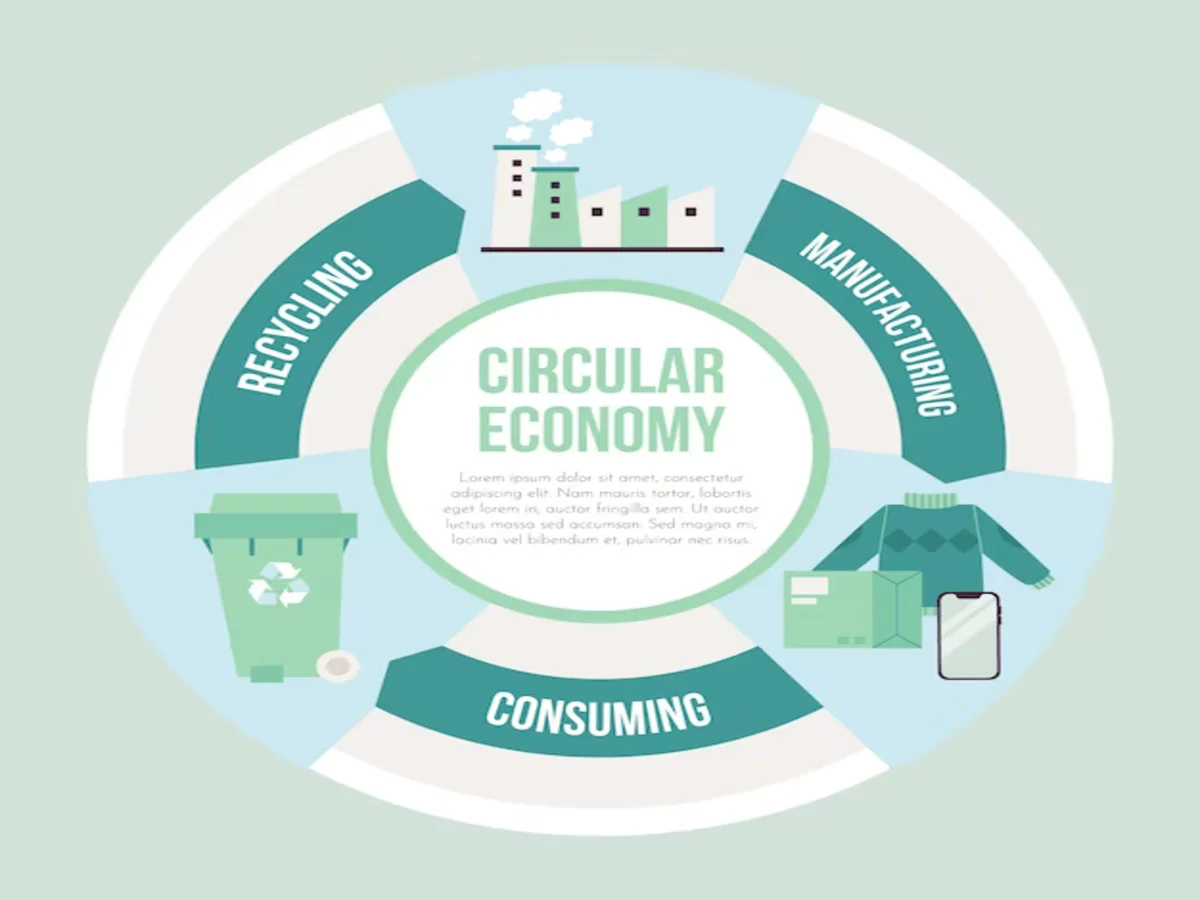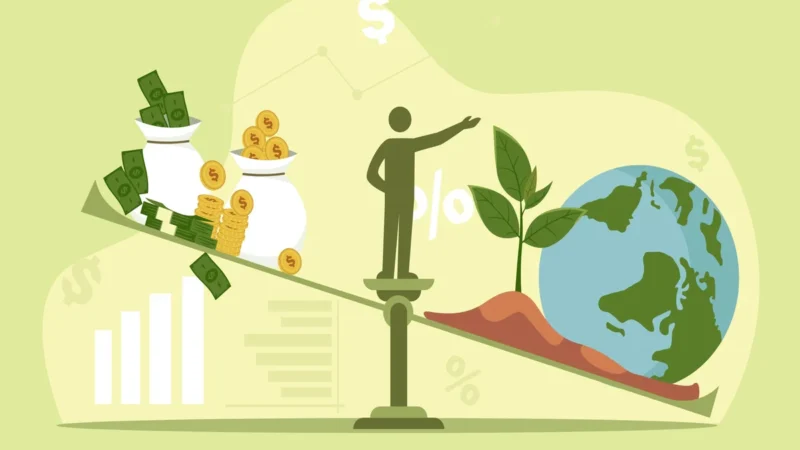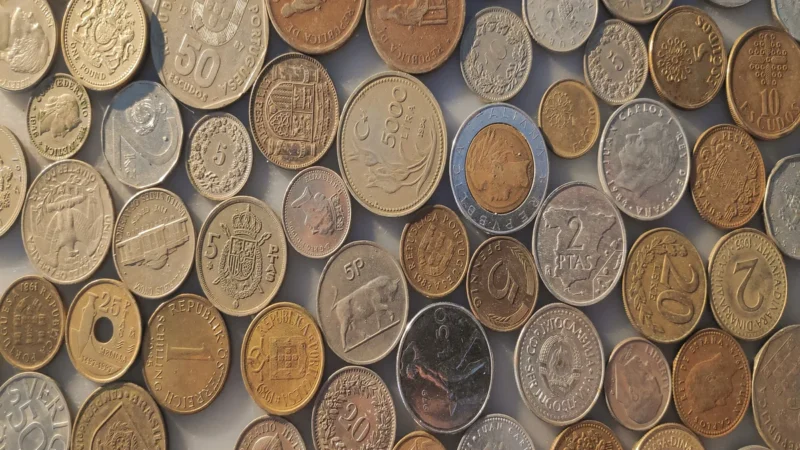Circular Economy: Sustainability for a Better Tomorrow

In a world grappling with environmental challenges and resource depletion, the concept of the circular economy has emerged as a beacon of hope. This innovative approach offers a promising solution to the unsustainable linear consumption patterns that have dominated our society. The circular economy not only addresses waste management but also redefines the way we produce, consume, and value resources, thereby paving the way for a more sustainable and prosperous future.
1.Circular Economy
At its core, the circular economy aims to create a closed-loop system where resources are continuously regenerated and reused, minimizing waste and the need for constant extraction of raw materials. Unlike the traditional linear model that follows a “take-make-dispose” pattern, the circular economy promotes the “reduce-reuse-recycle” mantra. This approach involves designing products for longevity, enabling efficient recycling, and encouraging the repurposing of materials.
2.Benefits for the Environment
The circular economy has profound environmental benefits. By extending the lifespan of products through repair, refurbishment, and remanufacturing, we can significantly reduce the demand for new resources. This, in turn, leads to decreased energy consumption, lowered greenhouse gas emissions, and less pressure on ecosystems. Additionally, the reduction of waste production contributes to cleaner air, water, and soil, safeguarding the health of both our environment and ourselves.
3.Economic Advantages
Contrary to the misconception that sustainability hampers economic growth, the circular economy offers lucrative economic opportunities. Embracing circular practices can drive innovation, stimulate new business models, and lead to the creation of jobs in industries such as recycling, remanufacturing, and repair services. Moreover, the preservation of valuable resources can lead to cost savings for businesses, while reduced dependence on raw materials can mitigate price fluctuations and supply chain risks.
4.Social Impact
The circular economy promotes a shift in consumer behavior towards responsible consumption. As individuals become more mindful of their purchases, they contribute to a demand for durable and repairable products. This shift not only reduces waste but also fosters a sense of community engagement as people repair and share items. Furthermore, the circular economy can help address social inequalities by providing affordable access to refurbished goods, thus contributing to a more inclusive society.
5.Challenges and Implementation
While the circular economy holds immense promise, its widespread adoption faces challenges. Transitioning from a linear to a circular model requires changes in production processes, consumer attitudes, and business strategies. Policymakers play a crucial role in providing incentives, regulations, and infrastructure that facilitate this transition. Collaborative efforts between governments, businesses, and communities are essential to create an enabling environment for circular practices to flourish.
we can conclude this, the pursuit of a sustainable and better tomorrow, the circular economy emerges as a compelling solution that transcends environmental, economic, and social boundaries. By reimagining the way we use resources, the circular economy presents a pathway to not only mitigate the negative impacts of our current linear consumption patterns but also to thrive in a resource-constrained world. Embracing the circular economy is not just an option; it’s an imperative for building a resilient, prosperous, and harmonious future.
FAQs
1: What exactly is the circular economy?
The circular economy is a new way of thinking about how we use resources. Instead of the traditional “take-make-dispose” approach, it focuses on creating a closed-loop system where products are designed to last longer, be repaired, and have their materials reused. This minimizes waste, conserves resources, and reduces the negative impact on the environment.
2: How does the circular economy benefit the environment?
The circular economy offers several environmental benefits. By prolonging the life of products, we reduce the need for constant resource extraction and manufacturing, which leads to lower energy consumption and fewer greenhouse gas emissions. Additionally, less waste is produced, which helps maintain cleaner air, water, and soil, ultimately safeguarding our planet’s health.
3: Can the circular economy also boost the economy?
Absolutely! The circular economy presents economic opportunities. It encourages innovation, drives new business models, and creates jobs in industries like recycling and repair services. By relying more on reusing and refurbishing, businesses can save money by reducing their dependence on raw materials, which can also stabilize prices and supply chains.
4: How does the circular economy impact me as a consumer?
As a consumer, the circular economy can change the way you shop and use products. It promotes responsible consumption, encouraging you to buy items that are built to last, can be repaired, and are designed with recyclability in mind. This mindset not only reduces waste but also fosters a sense of community as people share and repair items.
5: What challenges does the circular economy face?
Transitioning to a circular economy has its challenges. It requires changes in how products are made, used, and disposed of. It demands shifts in consumer habits, business practices, and even policies. Collaboration between governments, businesses, and communities is crucial to create an environment where circular practices can thrive and make a lasting impact on sustainability.


